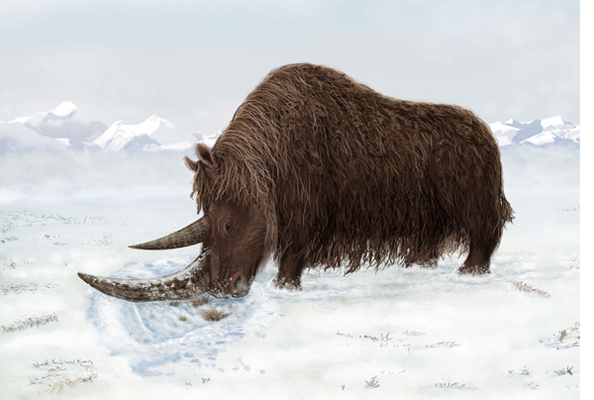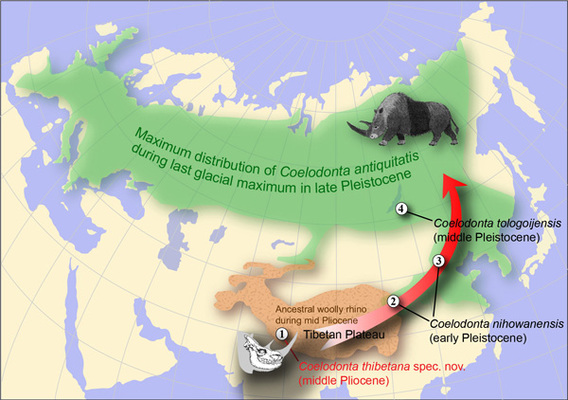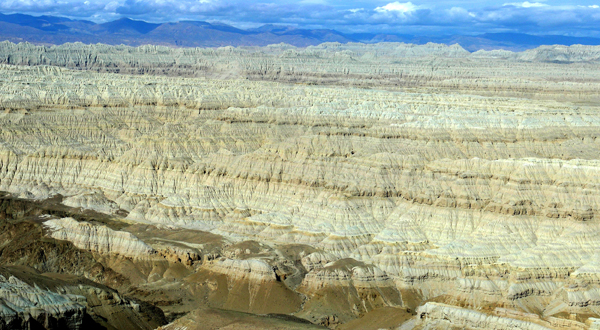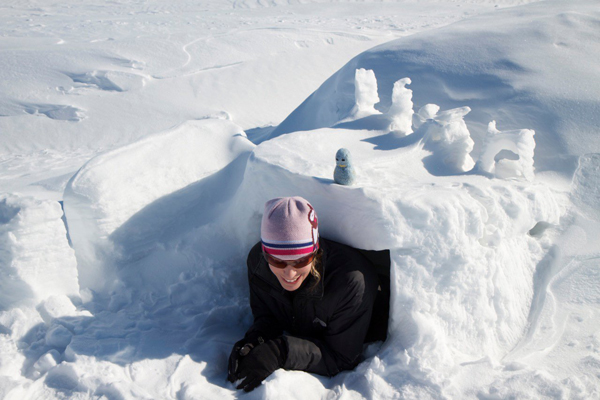
by Kathryn Hansen Thursday, January 5, 2012

An artist's reconstruction shows how the Tibetan woolly rhino might have used its flattened horn to sweep away the snow and look for vegetation. Julie Naylor

As global climate cooled and cold habitats expanded, woolly rhinos descended in latitude. Xiaoming Wang and Laura Saila

Rock exposures in the Himalayas' Zanda Basin are a paleontologic nirvana for fossil-hunters. Xiaoming Wang

Kathryn Hansen is an associate editor at EARTH and writes the CryoScoop blog. Lora Koenig
The discovery of a woolly rhino fossil in Tibet that predates the last glacial maximum shows how these and possibly other creatures were already adapted for the cold climate to come.
Amid today’s interglacial, two major ice sheets cover much of Greenland and Antarctica. In contrast, during the last glaciation in the Pleistocene, ice sheets spanned North America and Scandinavia, and at times covered more than 30 percent of Earth’s land. Mammals such as woolly mammoths, woolly rhinos, giant sloths and saber-toothed cats, now extinct, flourished in the harsh environment, but little is known about the origins of their cold-hardy adaptations.
Now, geologists and paleontologists led by Xiaoming Wang of the Natural History Museum of Los Angeles County have turned up some clues. Working in the Himalayan foothills in the southwestern Tibetan Plateau, the team unearthed the complete skull and lower jaw of a new species of woolly rhino, Coelodonta thibetana. The discovery was published this month in Science.
The rhino, which roamed the harsh Tibetan region 3.6 million years ago during the Pliocene, had already developed cold-weather survival tools including a flattened horn that it used to sweep away snow to find food. Thus, C. thibetana was well prepared for the ice-age environment that arrived a million years later. Descending from the Tibetan mountains, the woolly rhino flourished in the frigid conditions of northern Asia and Europe.
"Cold places, such as Tibet and the Arctic and Antarctic, are where the most unexpected discoveries will be made in the future — these are the remaining frontiers that are still largely unexplored," Wang said in a press release from the National Science Foundation.
NSF Story: http://www.nsf.gov/news/news_summ.jsp?cntn_id=121482
© 2008-2021. All rights reserved. Any copying, redistribution or retransmission of any of the contents of this service without the expressed written permission of the American Geosciences Institute is expressly prohibited. Click here for all copyright requests.